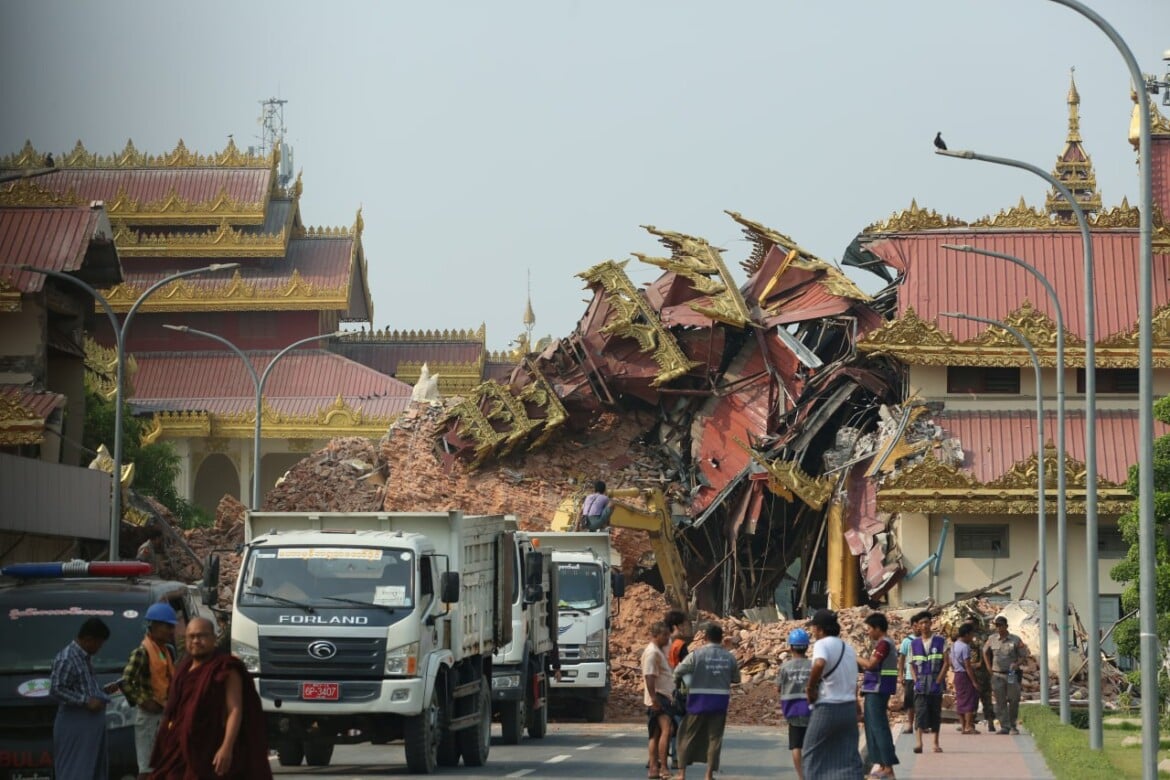Analysis
After the Myanmar earthquake, the junta went back to bombing
Thomas Andrews, UN special rapporteur on human rights in Myanmar, said in a post on X that the military's response showed their “willingness to weaponise aid in the midst of natural disasters.”

Not even the earthquake could stop the war in Myanmar. Before the dead and wounded had even been pulled from the rubble, the day after the earthquake, the ruling military junta made even more of the same. On Saturday, according to the People's Defense Forces (PDF), the armed wing of the opposition National Unity Government (NUG), the coup-installed junta dropped bombs on the village of Nwe Khway (in the Chaung U district in Sagaing), located in the region of the earthquake’s epicenter region, as well as Ley Wah (Kayin State) and Pyu (Bago).
A few hours earlier, General Min Aung Hlaing, the leader of the coup-installed junta, visited Mandalay, Myanmar's second-largest city (population 1.7 million), the closest to the epicenter and under the junta’s control, where at least 1,500 buildings were reported damaged and bridges, buildings, monasteries, a hospital and a hotel had collapsed.
Less than 24 hours earlier, the junta's leader, in an unusual move, had asked the world for international assistance. The request was immediately met by China and Russia (among the main supporters and arms suppliers of the coup-installed junta), India, Singapore, France, the European Union (which has already allocated €2.5 million) and the United States. The World Health Organization announced that it had activated its emergency management system and begun the mobilization of its logistics center in Dubai. Some aircraft were already ready to depart, although as of Saturday night, Mandalay airport was still closed due to damage. It will then be a matter of seeing how the military will manage this aid, given the previous failures after Cyclone Mocha two years ago and Typhoon Yagi last September.
Thomas Andrews, UN special rapporteur on human rights in Myanmar, said in a post on X that the military's response showed their “willingness to weaponise aid in the midst of natural disasters.” Cecilia Brighi, the secretary-general of the Italia-Birmania Insieme (Italy-Burma Together) NGO, among the organizations that immediately started fundraisers for aid to be sent to all areas affected by the earthquake, had a similar view: “In the past, aid never went to the entire population, but was seized and managed by the junta,” she recalled. The U.N. Office of Humanitarian Affairs (OCHA) reported shortages of trauma kits, blood bags, anesthetics, assistive devices, essential medicines and tents for health workers.
As of Saturday night, there were 1,644 officially confirmed victims, a number that is almost certain to rise for a long time [the death toll had climbed to over 2,000 late on Monday]. Witnesses on the ground reported digging with their bare hands, after the military junta declared a state of emergency in six of the country's seven regions: Sagaing, Mandalay, Magway, Naypyidaw, Bagonel and parts of Shan State. According to the United States Geological Survey, the final toll could end up between 10,000 and 100,000 dead, with the economic losses exceeding the country's annual GDP.
The epicenter of the earthquake, northwest of the town of Sagaing, was in a region of central Myanmar under the control of the rebels fighting the military junta that came to power in a coup on Feb. 1, 2021, with areas actively fought over between the rebels and the junta. According to the latest estimates, the junta controls less than a quarter of the country. In these areas, both internet access and electricity have been disconnected by the coup-installed junta, infrastructure is lacking, and the civil institutions, already precarious, have been reactivated only in part and thanks to the voluntary work of local communities. Witnesses on the ground reported that they have never seen such destruction in their lives.
The possibility of aftershocks means constant fear about the buildings left standing or slightly damaged. Myanmar is a seismically active area, lying along the Sagaing Fault, a tectonic boundary between the Burmese microplate and the Indian Plate, which is pushing northeast, clashing against Asia. Because the plate is as straight as a straight edge, when it releases energy this can cause precisely such earthquakes, affecting large areas. The earthquake that struck Myanmar on Friday is believed to be the most powerful recorded in the area since 1946: magnitude 7.7, followed a few minutes later by a second one of magnitude 6.7. Because of the relatively shallow depth (10 kilometers), it was felt throughout Southeast Asia, as far as China. A state of emergency was declared in Bangkok as well, the capital of neighboring Thailand, where people (together with robots) were still digging for any survivors of the collapse of a 30-story skyscraper under construction, which had workers on it when the earthquake started.
As of Saturday night, the death toll in Thailand stood at 11, with hundreds of people forced to spend Friday night outdoors: more than 2,000 buildings were reported damaged, and inspections were underway to check whether the buildings could be used. But as evening fell on Bangkok, the city remained brightly lit, and searches were set to continue through the night. In Myanmar, however, now in its fifth year of war, as the second day after the earthquake drew to a close, there was more darkness than usual. The earthquake means more displaced people to be added to the existing 3 million, and more victims besides the 6,000 civilian casualties already caused by the ongoing four-year conflict.
Originally published at https://ilmanifesto.it/myanmar-gia-1-644-vittime-dopo-il-terremoto-le-bombe on 2025-03-30
